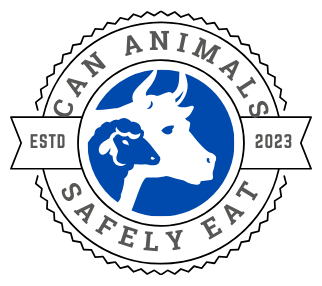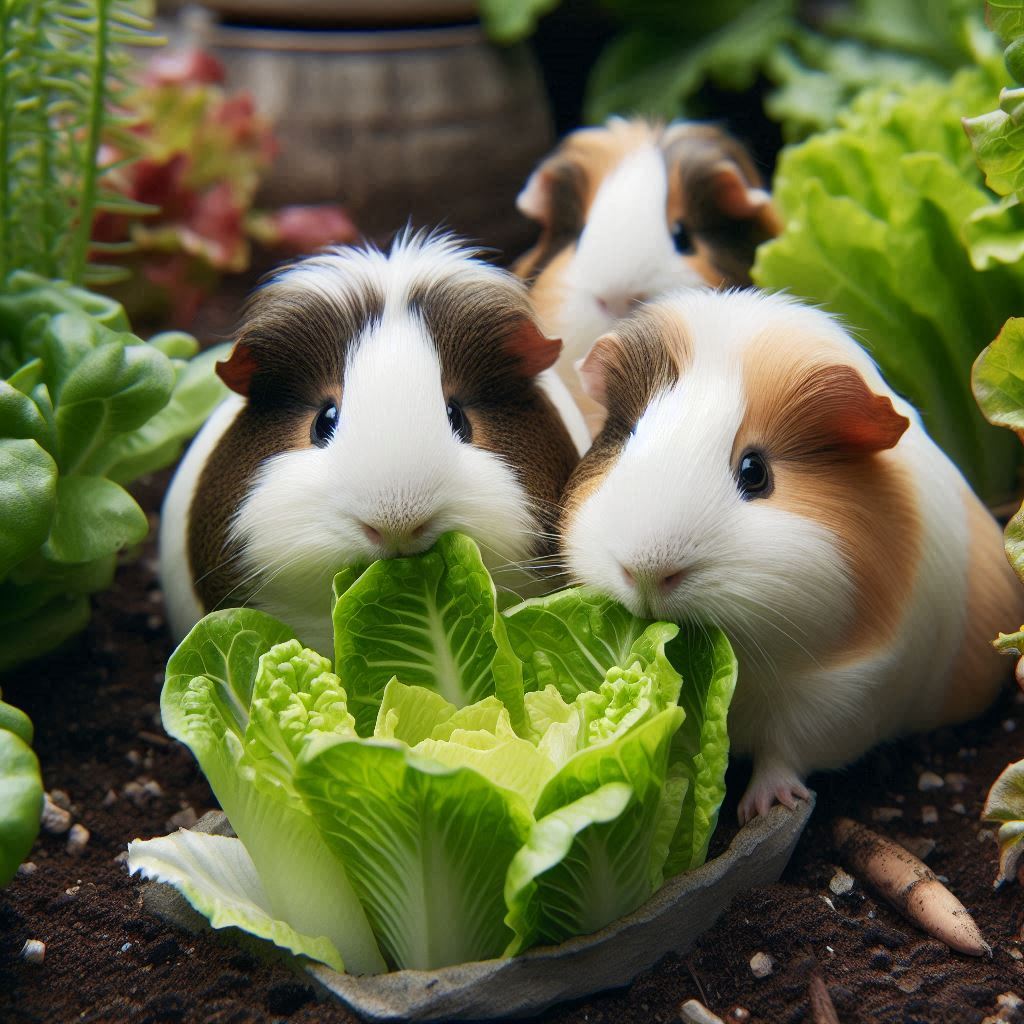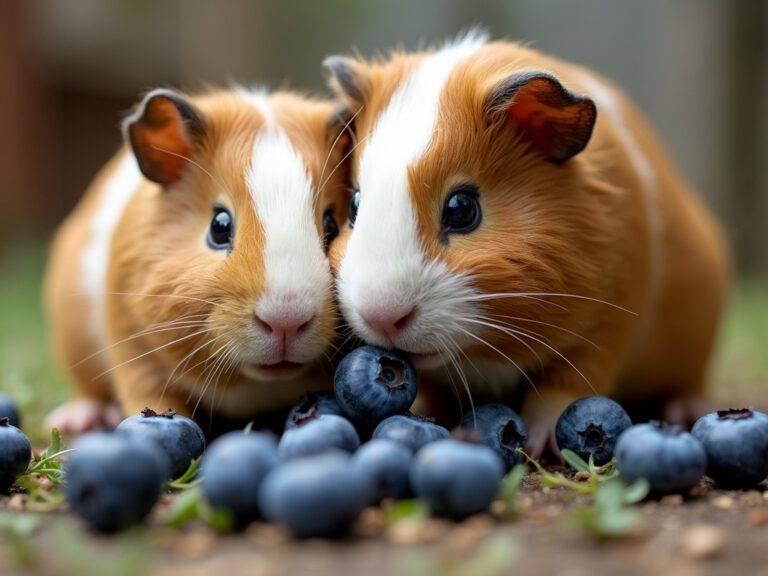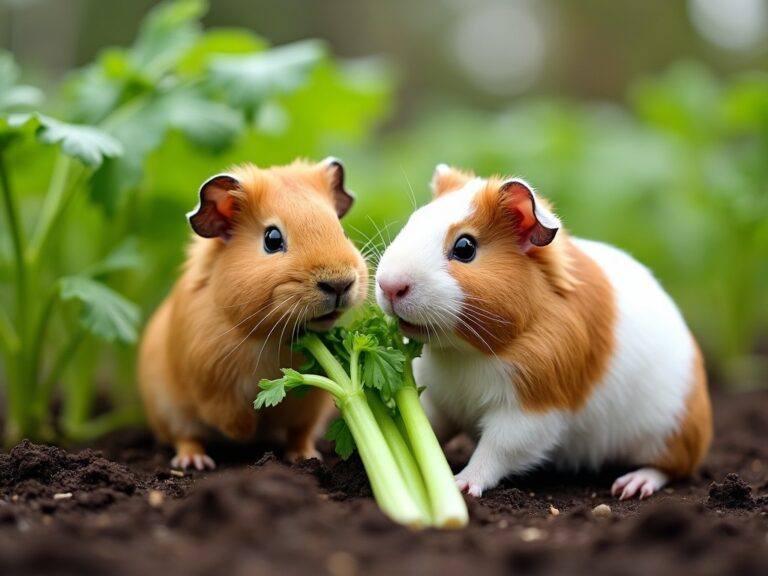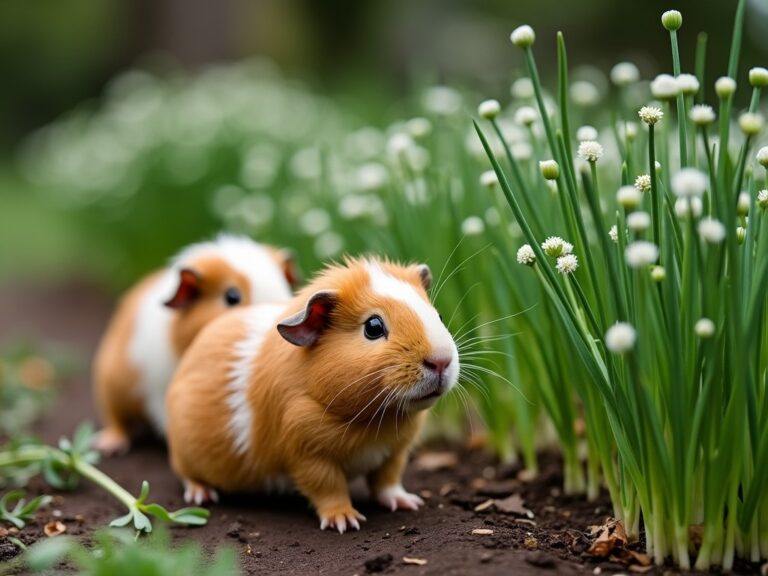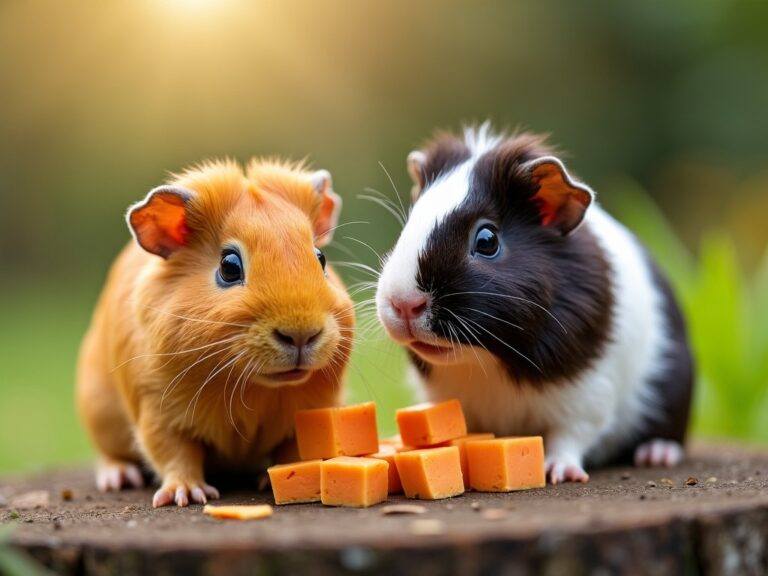Can Guinea Pigs Safely Eat Romaine Lettuce
Guinea pigs can indeed safely eat romaine lettuce. It is rich in fiber and hydration, and also relatively low in calories, which helps to prevent obesity. On top of that, it provides vitamins A and C, crucial since guinea pigs cannot produce vitamin C on their own and need to source it from their food.
However, moderation is KEY. When adding romaine lettuce to a guinea pig’s diet, serving size and frequency matter.
Aim to mix it with various other vegetables such as broccoli, carrots, or bell peppers to ensure a balanced intake of nutrients.
Remember, always wash all veggies thoroughly; pesticides or other chemicals can be harmful to your guinea pig.
Before we look at the specific role of this vegetable in a guinea pig’s meal plan, let’s highlight something crucial.
Introduce any new food, including romaine lettuce, gradually to avoid digestive upset. With proper introduction and attentive care, you help maintain the good health and happiness of your guinea pig.
Understanding Romaine Lettuce in a Guinea Pig’s Dietary Habits
Guinea pigs have specific dietary needs that require a balance of fiber, vitamin C, and low-calorie greens.
The bulk of their diet should consist of high-quality hay with some pellets and fresh veggies to spice things up a bit!
Their health hinges on a diet that’s rich in roughage to aid digestion and vitamin C to prevent diseases like scurvy, which they’re prone to.
Vegetables play a vital role in a guinea pig’s diet. Not only do they provide essential nutrients, but they also bring variety to their daily routine, which is important for their overall well-being.
Compared to other types of lettuce, romaine is a superior choice for guinea pigs. It’s packed with nutrients and has a crunch that guinea pigs enjoy. It’s a hydrating vegetable that also adds fiber to their diet, which is critical for them.
Despite its benefits, there are limitations to feeding romaine lettuce to guinea pigs. Too much can cause digestive problems like diarrhea due to its high water content. Therefore, moderation is key.
Variety is just as important as each vegetable provides a mix of vitamins and minerals. Introducing a spectrum of vegetables, balanced with high-fiber hay and a small portion of quality guinea pig pellets, rounds out their diet nicely.
How Best to Introduce Romaine Lettuce to Your Guinea Pig
I’ve laid out the facts: romaine lettuce is more than just safe for your guinea pig; it’s beneficial. But how do you go about introducing it?
Start with a small piece of romaine to see how your pet reacts. Remember, just like people, each guinea pig is unique and might have its own preferences and tolerance.
As you add romaine lettuce to your guinea pig’s diet, keep a close eye on their health. Look for signs of vitality such as a shiny coat and active behavior.
Conversely, if you notice any digestive discomfort, it might signal that it’s time to reassess their meals.
Nutritionists advise to vary a guinea pig’s diet for optimum health. This means a rotation of safe vegetables, with romaine filling a valuable role.
I always prefer to introduce one new vegetable at a time to avoid overwhelming my pet’s system.
Ensure you’re getting the best lettuce available. Always choose fresh, organic leaves and store them properly to preserve their nutritional value.
Our guinea pigs rely on us for their health and happiness—providing high-quality, chemical-free foods is so important in my opinion.
Including romaine lettuce into your guinea pig’s meal routine should be done thoughtfully. The key is balance and variation.
With the right approach, your furry friend will enjoy both the taste and health benefits of this fresh, leafy green.
